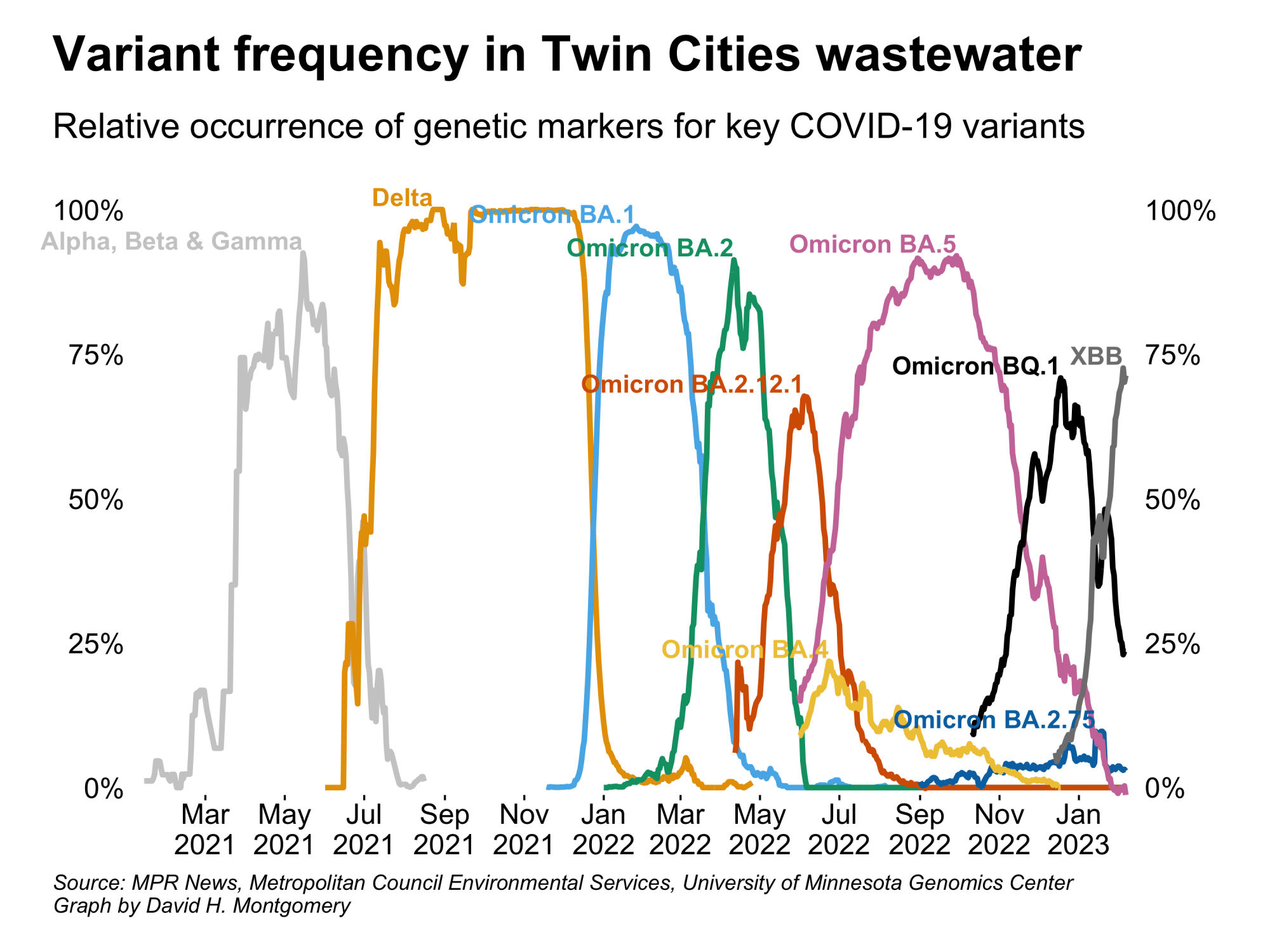Metrics show less COVID, but we want to hear your experience

Go Deeper.
Create an account or log in to save stories.
Like this?
Thanks for liking this story! We have added it to a list of your favorite stories.
Influenza, RSV and COVID-19 hospitalizations all continue to stay well below the peaks seen in late 2022.
Spoiler alert: the metrics this week don’t show much change in COVID activity compared to the last few weeks. Anecdotally, however, the APM Research Lab has been hearing about more cases than any time in the recent past. And, COVID-19 levels in wastewater — a potential early warning tool — are up across much of the state.
So, we’re curious, have you been hearing about more COVID cases in your network of late? If you’d like, fill out the simple, extremely unscientific poll below asking about what you’ve heard lately. We’ll share the numbers in next week’s update. And read on for specifics about what the official data is showing about COVID in our communities right now.
Cases, hospitalizations and deaths all indicate a relatively steady state of COVID
Last week, cases were up across the western part of the state. This week, southwest Minnesota continued on that trend, while west-central and northwestern Minnesota saw cases decline back to around where they were two weeks ago. In all other areas of the state, cases were up or down only slightly.
Turn Up Your Support
MPR News helps you turn down the noise and build shared understanding. Turn up your support for this public resource and keep trusted journalism accessible to all.

Intensive care unit admissions dropped to the lowest number since early October. Non-ICU admissions stayed relatively steady, at a rate lower than we saw from May – December 2022.

Deaths fell from the relative high seen in early January, but, for the most recent period with complete data, deaths are still around the level seen during the elevated, plateau-like period of late fall 2022. Nonetheless, deaths have remained well below the numbers of the last two winter seasons.

COVID in wastewater ticks up across state
Twin Cities Metro update
The total level of virus decreased by six percent last week compared to the previous week, according to the latest data from the Metropolitan Council and the University of Minnesota’s Genomic Center. The COVID load has bounced up and down in the last couple of months, without a consistent trend up or down. Bonnie Kollodge from the Met Council, however, noted in an email that “the RNA loads for the past 10 weeks have been higher than the 118-week average since the Council began sampling.”
Looking at a time series of those 118 weeks, the last 10 weeks are nowhere near the peak seen during last winter and are also below the levels from late 2020 and even last spring. On the other hand, the levels are well above those seen for much of 2021.

In terms of variants, the XBB sublineage of BA.2 continues its steep ascent and comprised 71 percent of this week’s samples. Almost all other samples (24 percent) were BQ.1, a sublineage of BA.5.

Statewide update
The last week of statewide wastewater data shows COVID levels are up across all regions of Minnesota. According to the latest data out of the University of Minnesota’s Wastewater SARS-CoV2 Surveillance Study, the largest one-week change was in the study’s South West region, with an increase of 62 percent in the COVID load. This is consistent with the increase in reported cases in that region as well. Central Minnesota had the next highest one-week increase, at 53 percent, and the highest four-week increase, at 88 percent.
The smallest one-week increase was in the study’s North East region, at 10 percent. The Twin Cities Metro was in the middle of the pack, with a 35 percent one-week increase. (This data lags the Met Council’s by a week, which results in the discrepancy between the two data sources for the Metro.)
CDC: A greener map of Minnesota
The map of Minnesota is mostly green again this week, according to the latest Centers for Disease Control and Prevention’s “Community Level” COVID-19 assessments. Pope County is the only county rated as high risk this week, while seven counties, all across the western portion of the state, are rated as medium risk.
This status brings the COVID-19 Community Levels map closer to what it was several weeks ago when all but one of Minnesota’s counties were assessed as low risk. That map was included in our Jan. 20 update. Between then and now, there was a moderate uptick in high- and low-risk counties.
This week 24 counties have case rates that meet the CDC’s definition of high transmission (weekly case rates of 100 or more cases per 100,000), a slight increase from 22 last week. Pope, Nobles, Mahnomen and Yellow Medicine counties have a weekly case rate that exceeds 200 per 100,000. Pope County and Nobles County also met this threshold last week.
The number of counties that meet the CDC’s definition of “substantial” transmission (weekly case rates of 50-99.9 per 100,000) increased slightly from 44 last week to 47 this week.


